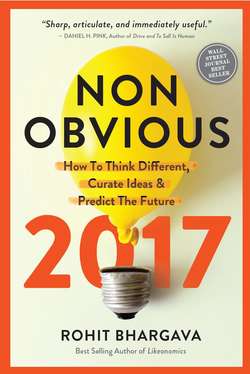Читать книгу Non-Obvious 2017 Edition - Рохит Бхаргава - Страница 26
На сайте Литреса книга снята с продажи.
The Rise Of “Curationism”
ОглавлениеMuseum curators organize collections into themes that tell stories. Whether they’re quirky like those told in the Mini Bottle Gallery, or an expansive exhibit at the Metropolitan Museum of Art, the goal of curation is always to take individual items and examples and weave them together into a narrative.
Curators add meaning to isolated beautiful things.
I am inspired by curators—and I am clearly not alone. The business world has turned toward the longtime practice of curation with such growing frequency that even the world of artists and art critics has begun to notice.
In 2014, art critic and writer David Balzer published a book with the brilliant title Curationism (a play on creationism) to explore how “curating took over the art world and everything else.” His book explores the evolution of the curator as the “imparter of value.”
Along the way he shares the valuable caution that this rise in curationism can sometimes inspire a “constant cycle of grasping and display” where we never take the time to understand what all the pieces mean. In other words, curation is only valuable if you follow the act of collecting information with enough moments of “quiet contemplation” to truly understand what you are seeing and collecting.
This combination of collection and contemplation is central to being able to effectively curate ideas and learn to predict the future. To do it, there are five specific habits that I believe can help you use curation to better see what others don’t.
